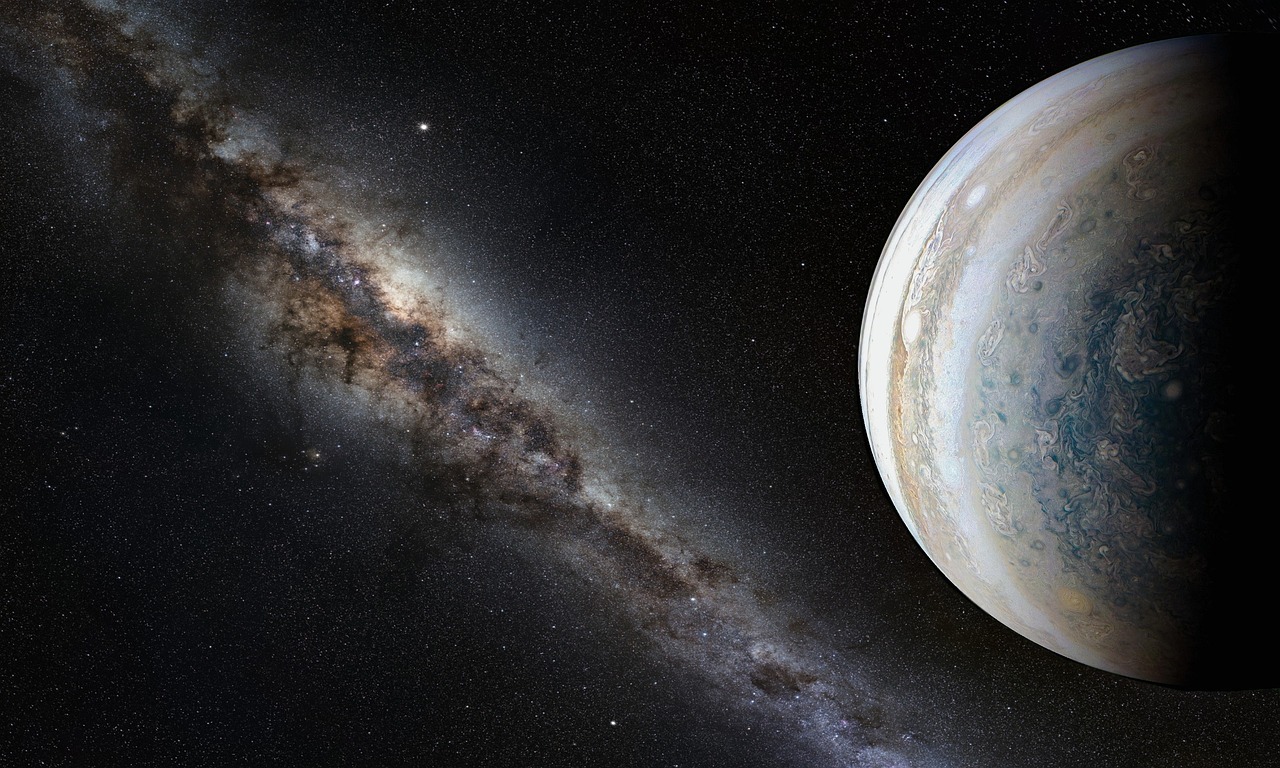
I. Introduction: A Giant Among Planets
Jupiter, the fifth planet from the Sun, stands as a celestial behemoth, dwarfing all other planets in our solar system. Its immense size, rapid rotation, and swirling cloud patterns make it a mesmerizing sight, captivating the imagination of astronomers and space enthusiasts alike.
Jupiter’s colossal stature alone is awe-inspiring. Its diameter is almost 11 times that of Earth, and its mass is more than two and a half times that of all the other planets combined. This immense mass, combined with its rapid rotation, generates a powerful magnetic field that far surpasses any other in the solar system.

II. Physical Characteristics: A Gaseous Giant
Atmospheric Composition – Clouds of Hydrogen and Helium
Jupiter’s atmosphere is primarily composed of hydrogen (89.8%) and helium (10.2%), with traces of methane, ammonia, and water vapor. These gases create the planet’s distinctive banded structure, with swirling clouds of varying colors and intensities.
Internal Structure – A Layered Giant
Beneath the visible atmosphere lies a complex internal structure. A dense core, possibly composed of metallic hydrogen and rock, is surrounded by a thick layer of hydrogen and helium. Within this layer, hydrogen exists in both molecular and metallic forms, with the latter behaving more like a liquid metal due to the intense pressure. This swirling liquid metallic hydrogen layer is responsible for Jupiter’s powerful magnetic field.
Magnetic Field: The Strongest in the Solar System
Jupiter’s magnetic field is the strongest in the solar system, extending far beyond the planet’s atmosphere, creating a vast magnetosphere. This powerful magnetic field deflects charged particles from the Sun, creating a protective barrier around Jupiter.
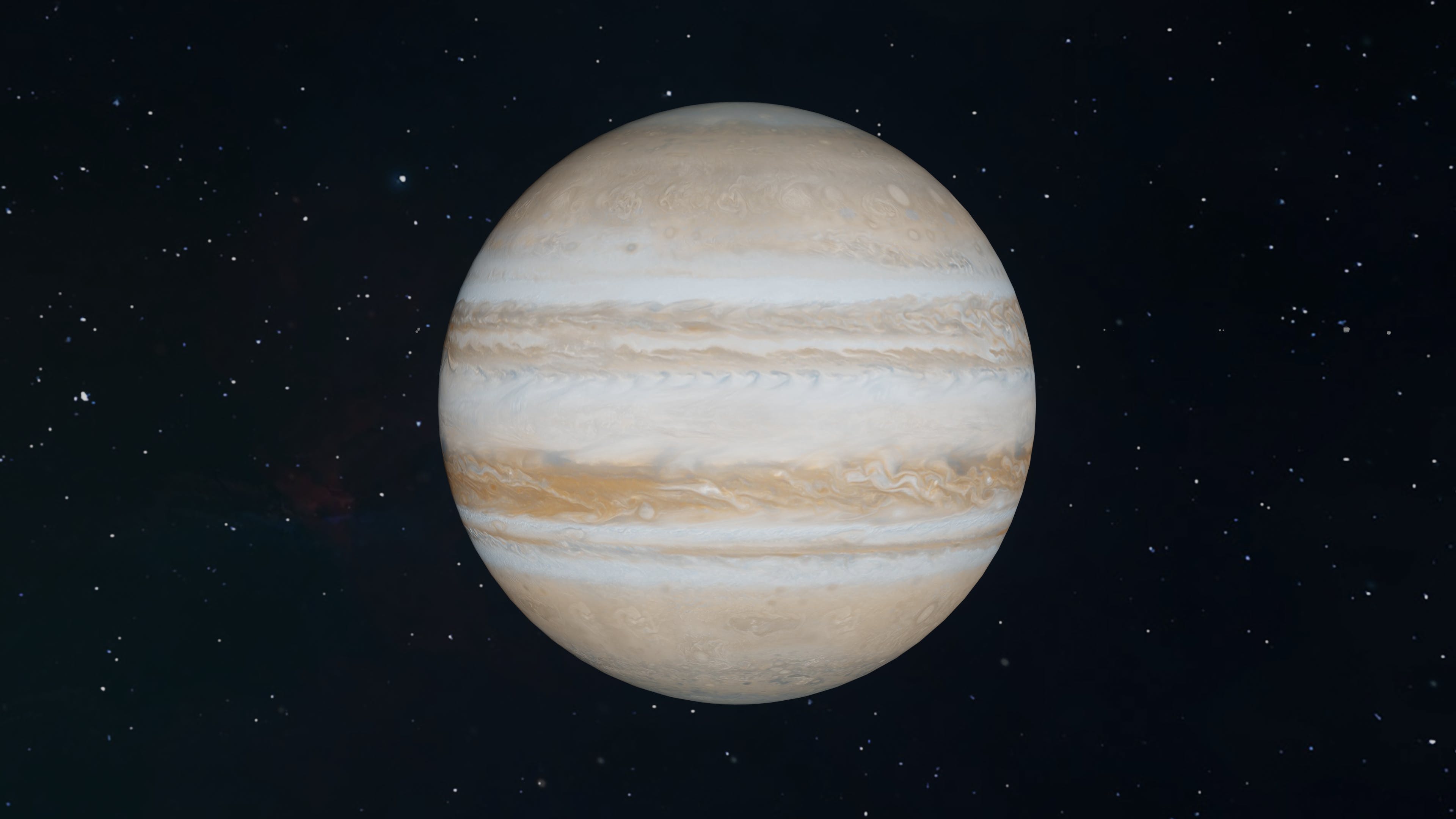
III. Atmospheric Dynamics: A Realm of Storms and Phenomena
Banded Structure: A Result of Convection
Jupiter’s atmosphere exhibits a striking banded structure, with alternating dark and light bands that stretch across the planet. These bands are caused by horizontal convection currents, driven by differences in temperature and pressure. The dark bands, known as zones, are regions of sinking gas, while the lighter bands, known as belts, are regions of rising gas.
The Great Red Spot: A Persistent Anticyclonic Storm
The most iconic feature of Jupiter’s atmosphere is the Great Red Spot, a massive anticyclonic storm that has raged for centuries. This giant storm is larger than Earth, with winds reaching speeds of up to 400 miles per hour.
Lightning Storms: A Jovian Thunderstorm
Jupiter’s atmosphere is home to some of the most powerful lightning storms in the solar system. These storms, known as sprites, can be as high as 1000 kilometers tall and generate energy equivalent to a small nuclear detonation.
Auroras: A Celestial Light Show
Jupiter’s magnetic field interacts with charged particles from the Sun, causing the planet to exhibit aurorae, similar to those seen on Earth. These auroral displays are visible in the polar regions of Jupiter, and they can be incredibly bright.
IV. Satellites and Rings
Jupiter is a celestial body surrounded by a vibrant retinue of moons, ranging in size from tiny asteroids to large, potentially habitable worlds. These moons, collectively known as the Jovian satellites, exhibit a remarkable diversity of geological features, reflecting their unique histories and environments.
Among the most intriguing of Jupiter’s moons are the four “Galilean satellites”: Io, Europa, Ganymede, and Callisto. These moons, discovered by Galileo Galilei in 1610, are giants in their own right, with Io being the most volcanically active body in the solar system. Europa, with its surface riddled with impact craters and a subsurface ocean thought to contain liquid water, is a prime candidate for harboring extraterrestrial life. Ganymede, the largest moon in the solar system, is even larger than Mercury and possesses a magnetic field, suggesting a subsurface ocean similar to Europa’s. Callisto, the outermost Galilean moon, is the oldest and most heavily cratered of the four, with a surface that has been largely unchanged for billions of years.
Beyond the Galilean moons, Jupiter possesses an extensive system of smaller satellites, numbering over 80. These moons range in size from tiny asteroids to bodies several hundred kilometers across. Some of these moons are in regular orbits, while others are irregular, often found in chaotic and eccentric orbits.
Jupiter’s faint rings, composed of dust particles and small ice particles, are the outermost extension of the planet’s system. These rings are extremely faint and difficult to observe, and their composition and origin remain largely unknown.
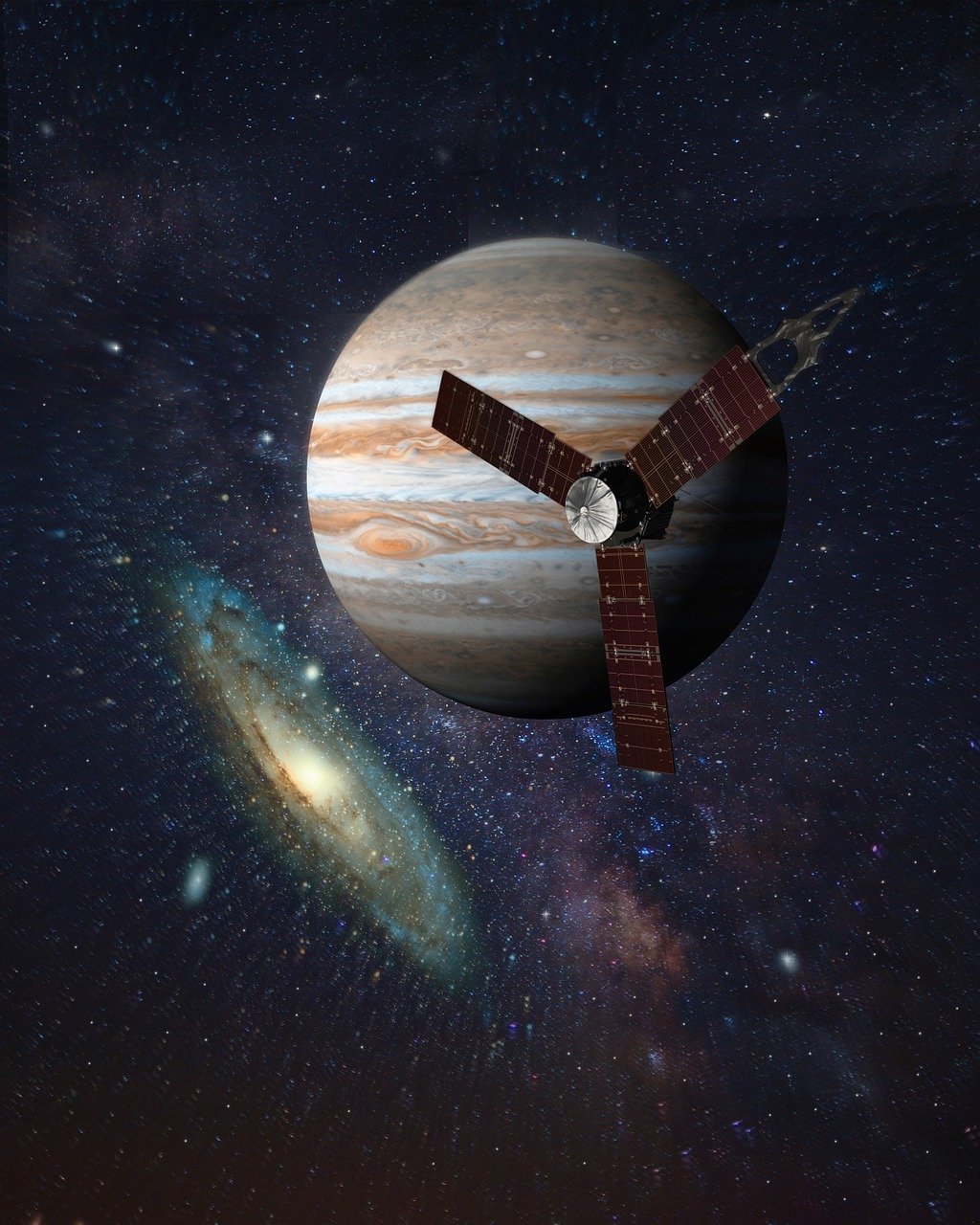
V. Exploration and Future Missions
Jupiter has long been a target of robotic exploration, with numerous missions venturing into its realm to unveil its secrets. Among the most notable missions are:
- Voyager 1 and Voyager 2: These twin spacecraft, launched in 1977, flew by Jupiter in 1979, providing the first detailed images and measurements of the planet and its moons.
- Galileo: This mission, launched in 1989, entered orbit around Jupiter in 1995 and spent eight years studying the planet and its moons. Galileo made groundbreaking discoveries, including the presence of liquid water on Europa and the active volcanoes on Io.
- Juno: Launched in 2011, Juno is currently in orbit around Jupiter, providing unprecedented insights into the planet’s internal structure and atmosphere. Juno’s mission is helping scientists understand how Jupiter formed and evolved, and its data is also providing important insights into the formation and evolution of our solar system.
Future plans for exploring Jupiter include the JUICE mission (JUpiter ICy moons Explorer), which is scheduled to launch in 2023 and arrive at Jupiter in 2031. JUICE will orbit Jupiter for three years, conducting detailed studies of three of the planet’s largest moons: Ganymede, Europa, and Callisto. The mission will focus on searching for signs of life on Europa and characterizing the potentialhabitable environments of Ganymede and Callisto.
VI. Conclusion
Our understanding of Jupiter has grown significantly over the past few decades, thanks to the efforts of robotic explorers. These missions have revealed a planet that is both dynamic and complex, with a diverse system of moons and a swirling, turbulent atmosphere. Jupiter’s role in the formation and evolution of our solar system is becoming increasingly apparent, and its potential to host life on its moons makes it a captivating target for future exploration. As we continue to probe the depths of the Jovian system, we are unlocking new mysteries and expanding our knowledge of our cosmic neighborhood.
Jupiter stands as a testament to the wonders of the universe, a celestial giant that continues to inspire and challenge our understanding of the cosmos. With each new mission, we delve deeper into its secrets, revealing a planet of immense diversity and potential, a world that holds the key to understanding our own origins and the possibility of life beyond Earth.
You may also like:
Mercury: The Closest Planet to the Sun
Venus: The Earth’s Twin or a Very Different Planet?
Mars: Comprehensive Exploration, unveiling the Mysteries
Jupiter: A Cosmic Giant – Symphony of Storms
Saturn: A Gaseous Giant with Enthralling Rings and Diverse Moons
Useful links about Jupiter:
NASA’s Jupiter page: https://science.nasa.gov/jupiter/
ESA’s Jupiter page: https://sci.esa.int/web/juice/-/59334-exploring-jupiter
JAXA’s Jupiter page: https://global.jaxa.jp/
Bibliography:
- Simon, J. L., et al. (2020). The Jupiter system and its implications for planetary formation. Annual Review of Earth and Planetary Sciences, 48(1), 221-253.
- McKinnon, W. B., et al. (2018). Evidence for a subsurface ocean on Jupiter’s moon Europa from Galileo magnetometer data. Nature Geoscience, 11(11), 775-782.
- Brida, F., et al. (2016). Composition of Jupiter’s rings inferred from Galileo dust impact data. Astronomy & Astrophysics, 585, A69.
- Bolton, S. J., et al. (2017). Juno’s first glimpse of Jupiter’s Great Red Spot: Implications for the depth and evolution of the storm. The Astrophysical Journal Letters, 841(2), L30.
- Morbidelli, A., et al. (2012). The Grand Tack model for Jupiter’s early history. Icarus, 219(1), 406-422.
- Hedman, M. M., et al. (2017). Decadal survey of planetary science and astrobiology: 2013-2022. The Planetary Science Decadal Survey, 1-401.

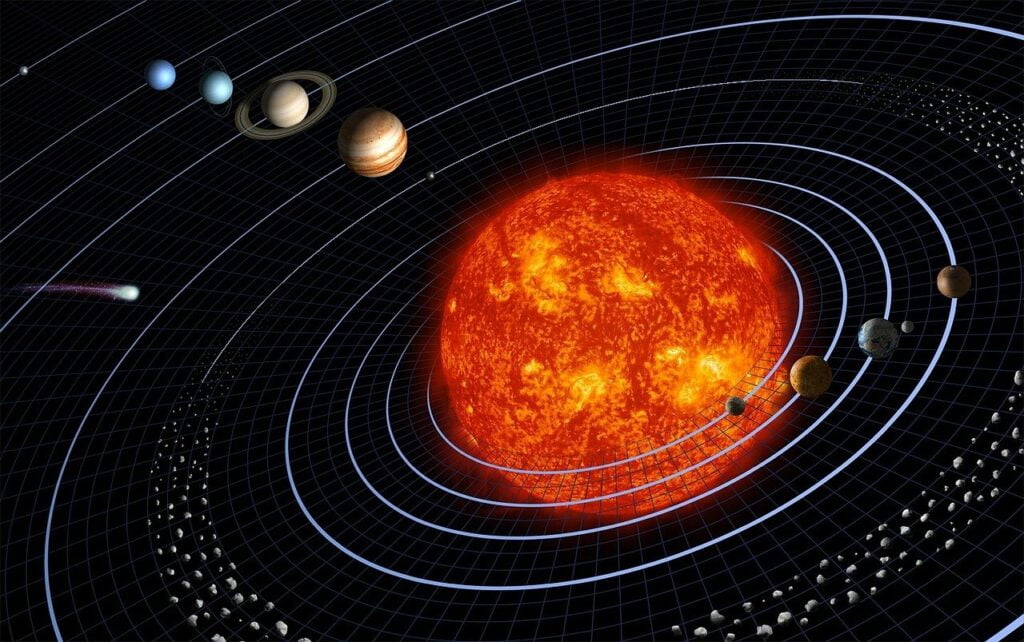
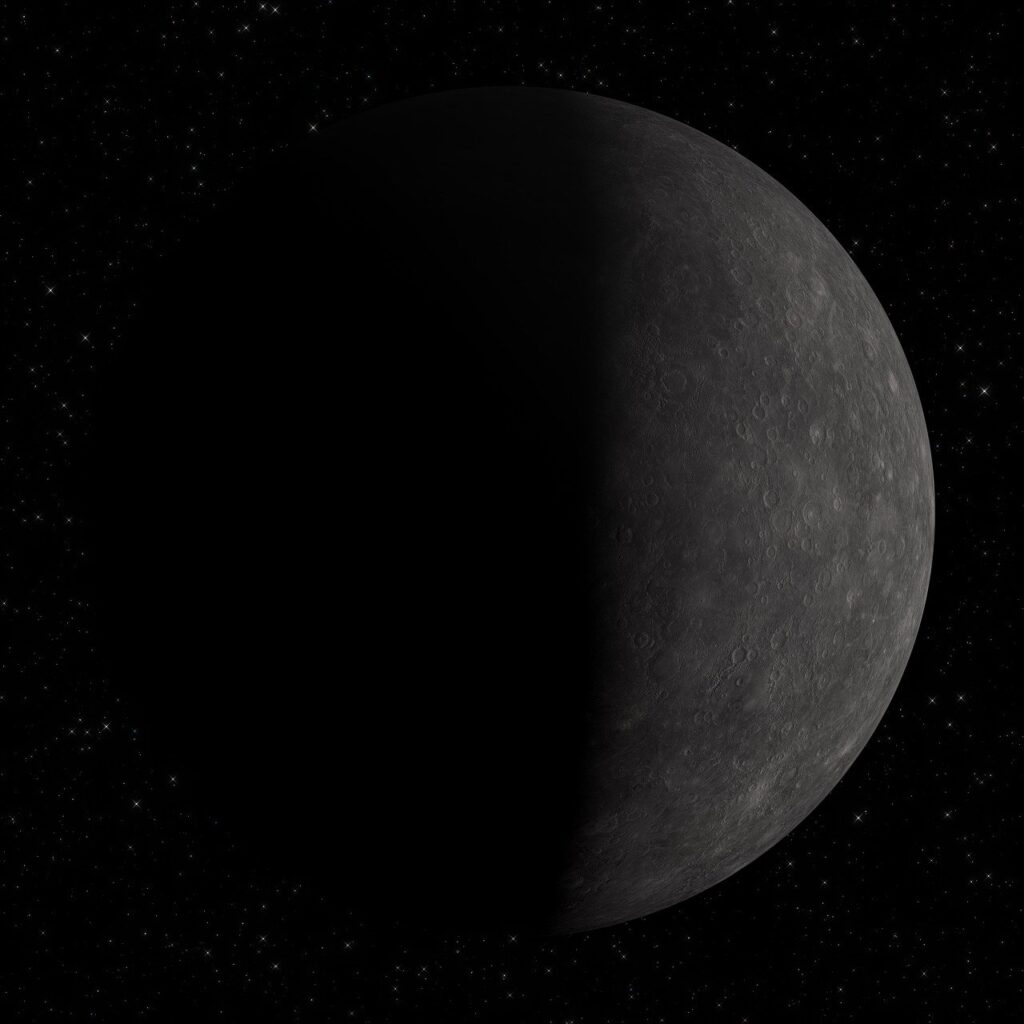
Pingback: Saturn: A Gaseous Giant with Enthralling Rings - NoBrainAir - Love Science
Pingback: The Kuiper Belt: A Relic of the Solar System - Love Science
Pingback: Oort Cloud: A Vast Realm of Comets - Love Science
Pingback: The Birth of Protostar - Love Science
Pingback: Stellar Classification - Love Science